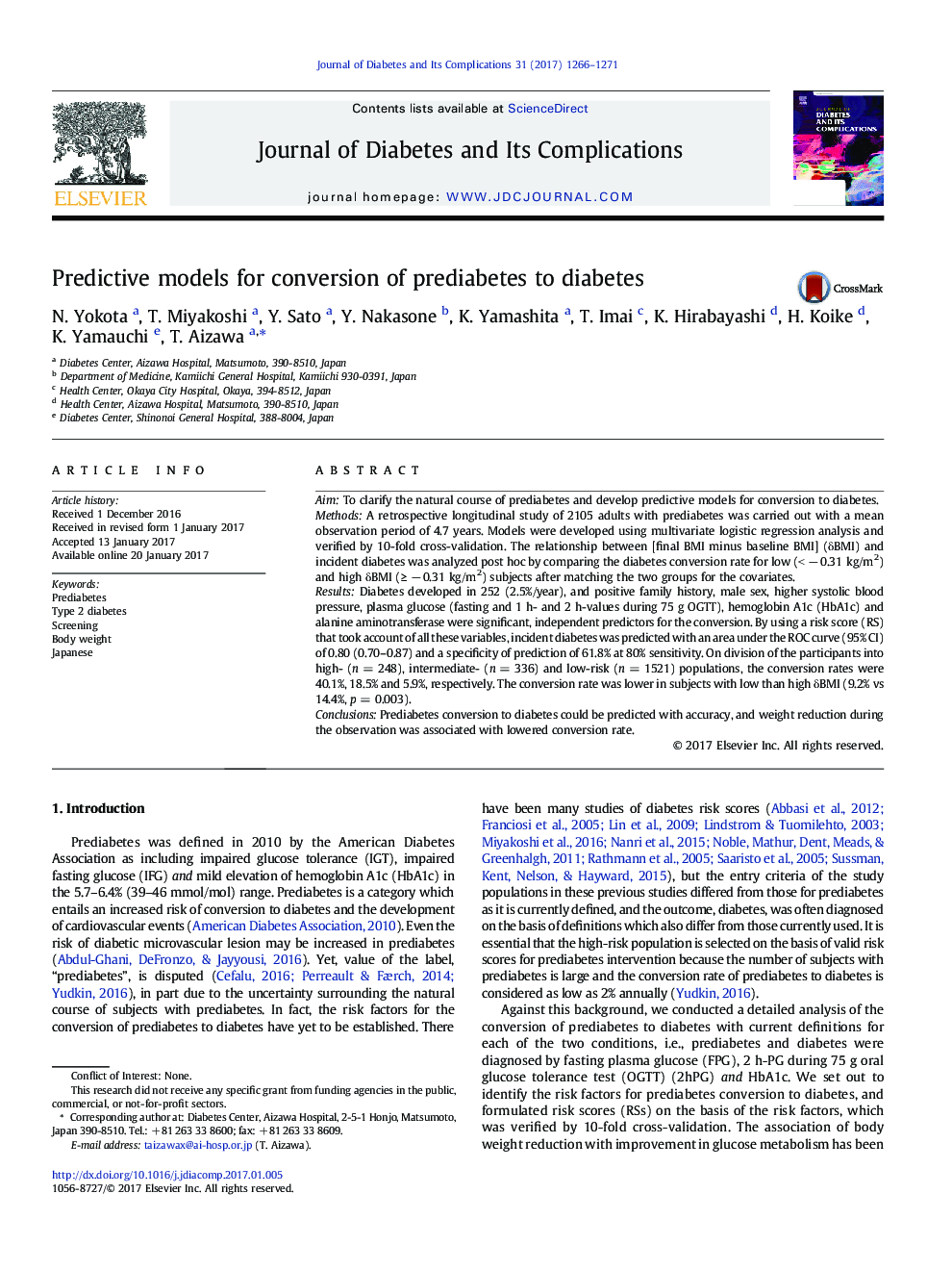| Article ID | Journal | Published Year | Pages | File Type |
|---|---|---|---|---|
| 5588006 | Journal of Diabetes and its Complications | 2017 | 6 Pages |
AimTo clarify the natural course of prediabetes and develop predictive models for conversion to diabetes.MethodsA retrospective longitudinal study of 2105 adults with prediabetes was carried out with a mean observation period of 4.7 years. Models were developed using multivariate logistic regression analysis and verified by 10-fold cross-validation. The relationship between [final BMI minus baseline BMI] (δBMI) and incident diabetes was analyzed post hoc by comparing the diabetes conversion rate for low (< â 0.31 kg/m2) and high δBMI (⥠â 0.31 kg/m2) subjects after matching the two groups for the covariates.ResultsDiabetes developed in 252 (2.5%/year), and positive family history, male sex, higher systolic blood pressure, plasma glucose (fasting and 1 h- and 2 h-values during 75 g OGTT), hemoglobin A1c (HbA1c) and alanine aminotransferase were significant, independent predictors for the conversion. By using a risk score (RS) that took account of all these variables, incident diabetes was predicted with an area under the ROC curve (95% CI) of 0.80 (0.70-0.87) and a specificity of prediction of 61.8% at 80% sensitivity. On division of the participants into high- (n = 248), intermediate- (n = 336) and low-risk (n = 1521) populations, the conversion rates were 40.1%, 18.5% and 5.9%, respectively. The conversion rate was lower in subjects with low than high δBMI (9.2% vs 14.4%, p = 0.003).ConclusionsPrediabetes conversion to diabetes could be predicted with accuracy, and weight reduction during the observation was associated with lowered conversion rate.
